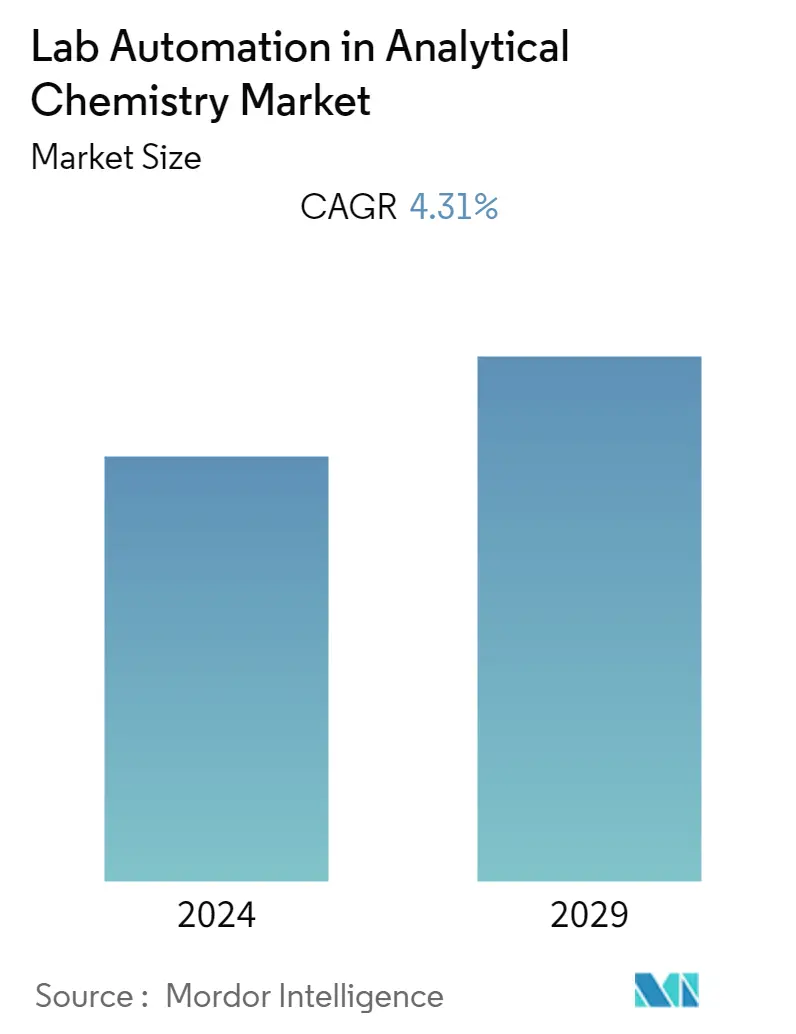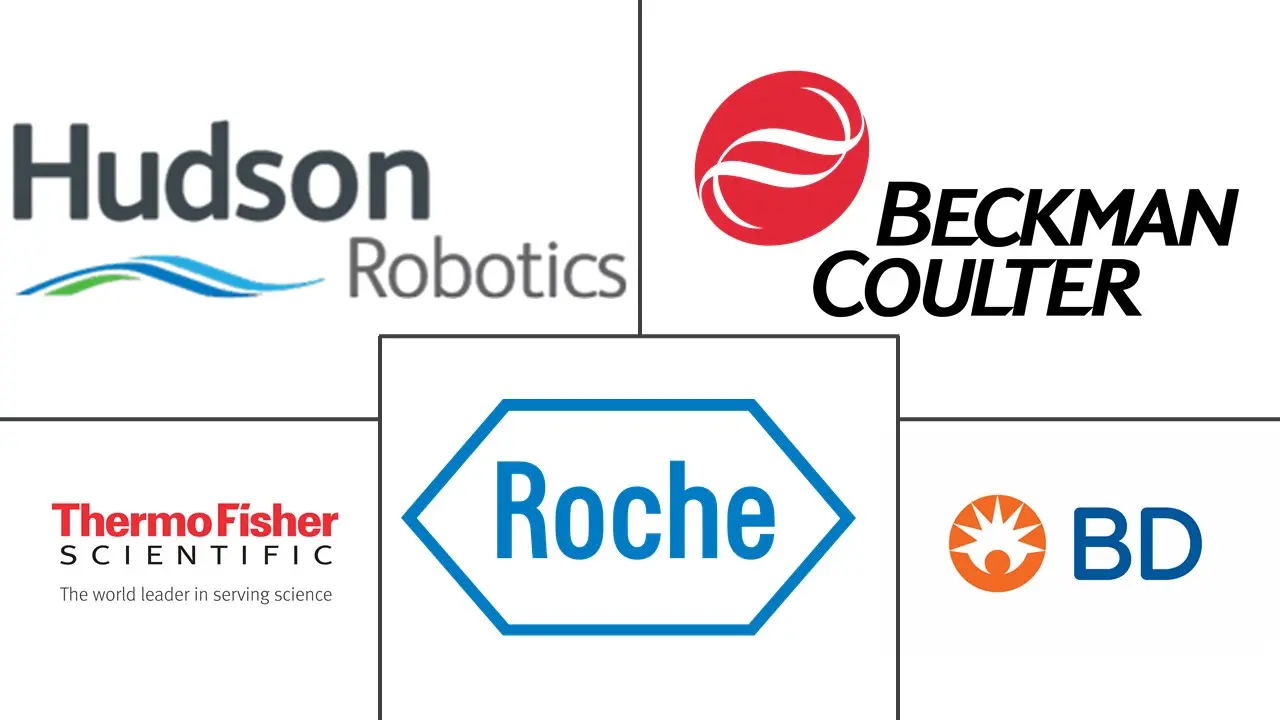Market Size of Lab Automation in Analytical Chemistry Industry

| Study Period | 2019 - 2029 |
| Base Year For Estimation | 2023 |
| CAGR | 4.31 % |
| Fastest Growing Market | Asia Pacific |
| Largest Market | North America |
| Market Concentration | Medium |
Major Players
*Disclaimer: Major Players sorted in no particular order |
Need a report that reflects how COVID-19 has impacted this market and its growth?
Lab Automation In Analytical Chemistry Market Analysis
The Global Lab Automation in Analytical Chemistry Market is expected to register a CAGR of 4.31% % during the forecast period 2020 to 2025. The benefits of laboratory automation in analytical chemistry include reduction of human errors in specimen handling, enhancements in overall process control, and faster turn-around-times (TAT) from specimen collection to test result reporting. The primary goal of diagnostic labs is to provide high quality and reliable information, fulfilling the industry's needs.
- Currently, technological advancements and increasing pressure to deliver results have led to the use of automated systems in laboratories. The adoption rate of automated systems is increasing due to its accuracy, advanced data management capacity, and reduced repetitiveness, and ultimately reducing the human intervention, thereby increasing throughput and accuracy.
- Many core labs are looking to enhance testing efficiency and better manage resources by upgrading to total laboratory automation (TLA). Although total lab automation can be challenging to plan and implement, it is particularly suited to laboratories that conduct a broad spectrum of highly automated testing, coupled with sophisticated laboratory information systems. TLA avoids the duplication, delays, and waste that can occur with task targeted automation.
- Laboratory automation contains computerized lab instruments and gadgets, which give advantages, such as expanded profitability, enhanced work process scope, reduced time cycle, and improved information quality. Lab automation is also vital to handle large volumes of sample tests at a rapid rate.
- In the recent past, Tecan launched a range of advanced liquid handling solutions, along with the new Fluent Gx Automation Workstation, to meet the critical needs of clinical and regulated laboratories. In October 2019, Hamilton launched its compact Microlab Prep automated liquid handler designed for those transitioning away from manual pipetting, using 96- and 384-well microplates and other sample vessels.
- Further, There has been a significance with the pharmaceutical industry toward laboratory automation trends, in the past two decades. Pharmaceutical companies require accurate target identification, and one of the main bottlenecks of drug discovery and development is compound validation. Lab automation is a crucial technology for any company undertaking these studies, offering rapid compound screening and improved data analysis.
- Additionally, with the recent outbreak of novel COVID-19, there is an increasing need for faster results in labs. The growing developments of automation systems by vendors are expected to create opportunities for the market going forward.
